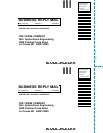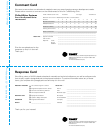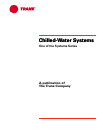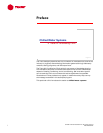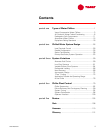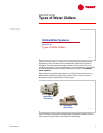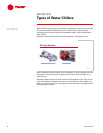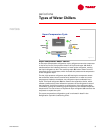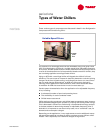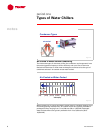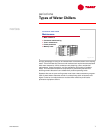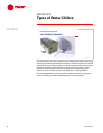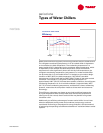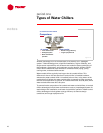
TRG-TRC016-EN 3
period one
Types of Water Chillers
notes
Vapor-Compression Water Chillers
In the vapor-compression refrigeration cycle, refrigerant enters the evaporator
in the form of a cool, low-pressure mixture of liquid and vapor (A). Heat is
transferred from the relatively-warm air or water to the refrigerant, causing
the liquid refrigerant to boil. The resulting vapor (B) is then drawn from the
evaporator by the compressor, which increases the pressure and temperature
of the refrigerant vapor.
The hot, high-pressure refrigerant vapor (C) leaving the compressor enters
the condenser, where heat is transferred to ambient air or water at a lower
temperature. Inside the condenser, the refrigerant vapor condenses into a
liquid. This liquid refrigerant (D) then flows to the expansion device, which
creates a pressure drop that reduces the pressure of the refrigerant to that of
the evaporator. At this low pressure, a small portion of the refrigerant boils
(or flashes), cooling the remaining liquid refrigerant to the desired evaporator
temperature. The cool mixture of liquid and vapor refrigerant (A) travels to the
evaporator to repeat the cycle.
The vapor-compression refrigeration cycle is reviewed in detail in the
Refrigeration Cycle Air Conditioning Clinic.
Vapor-Compression Cycle
compressor
compressor
expansion
expansion
device
device
energy in
energy in
absorb heat
absorb heat
reject heat
reject heat
evaporator
evaporator
condenser
condenser
A
B
C
D
Figure 5



